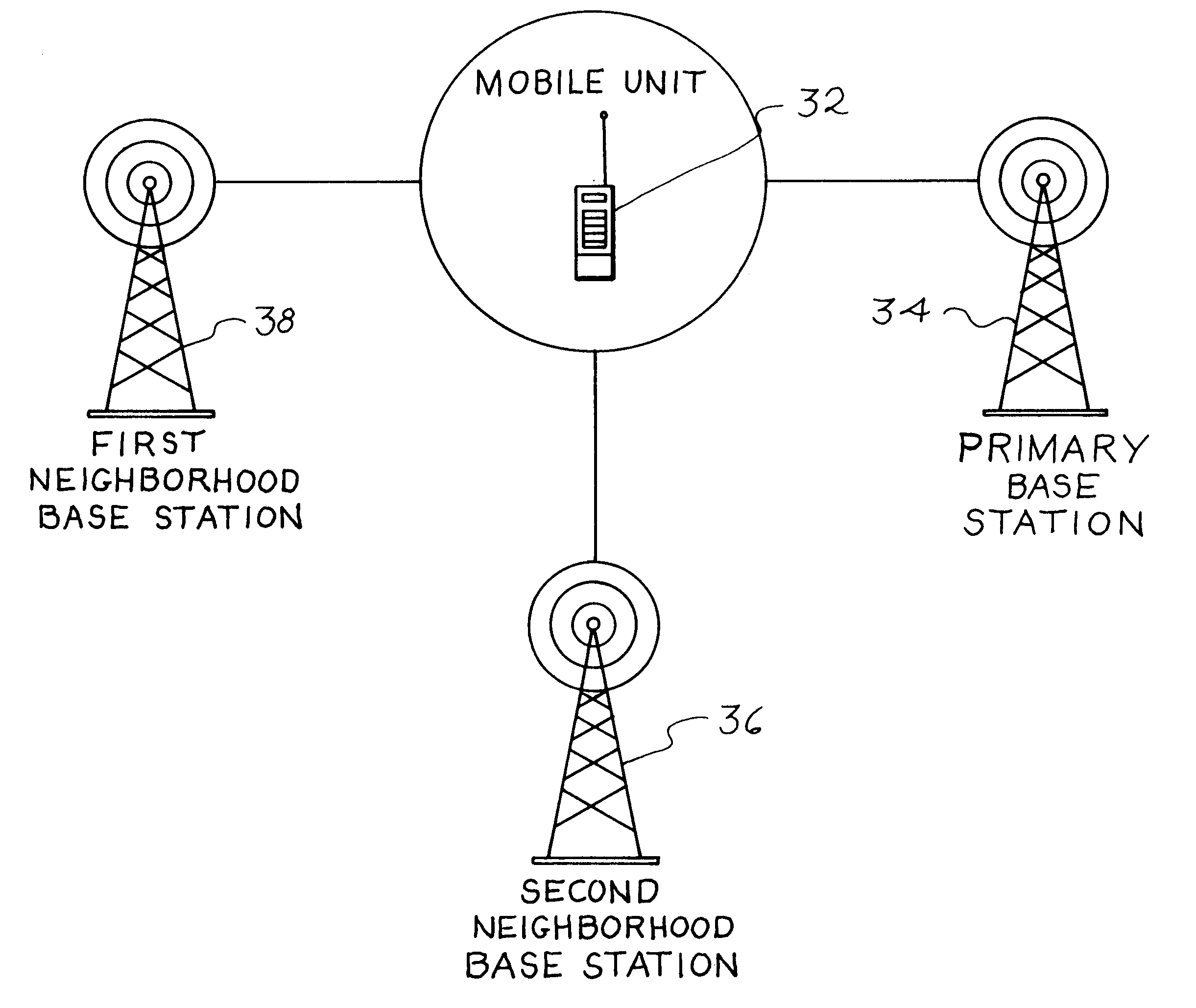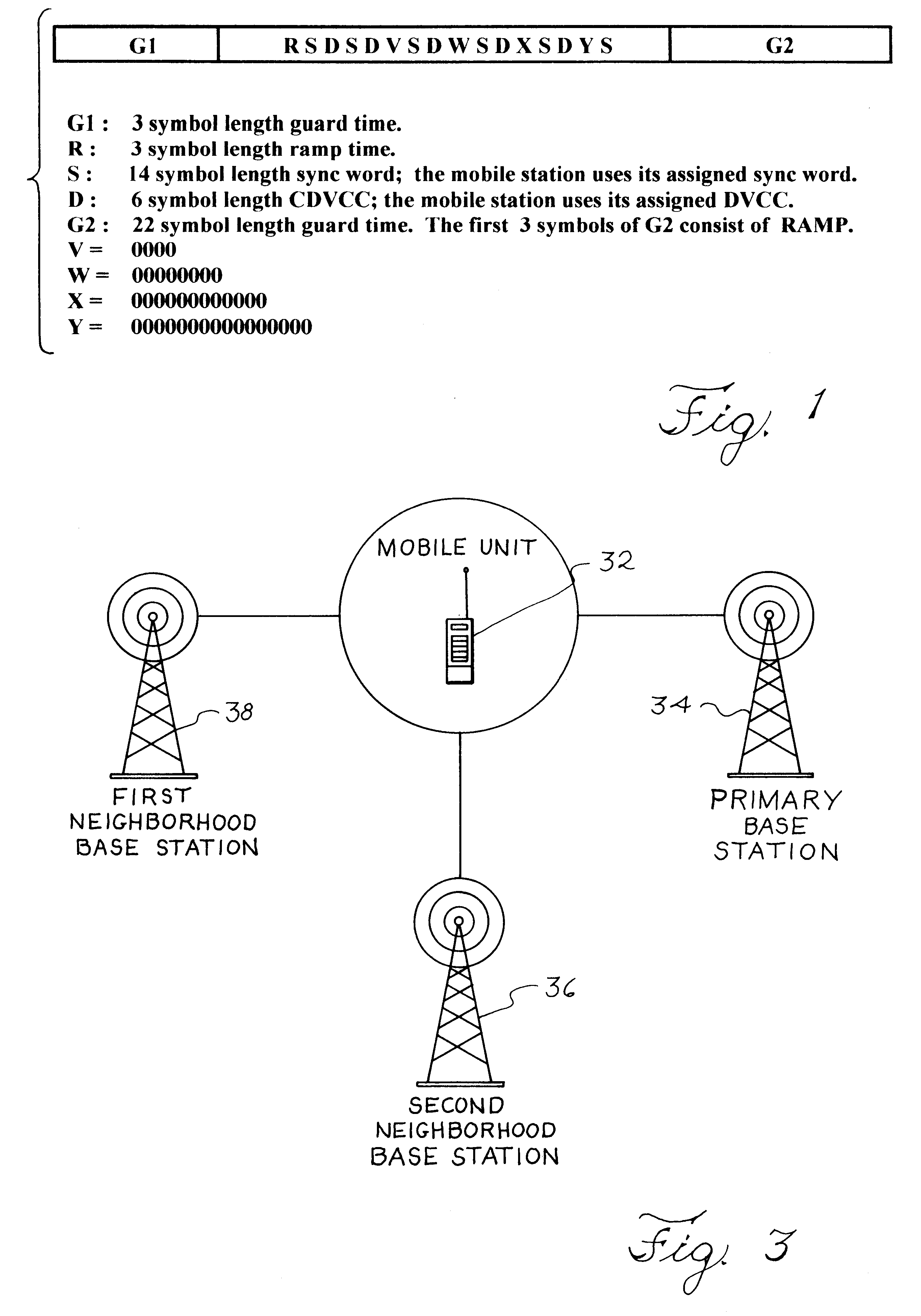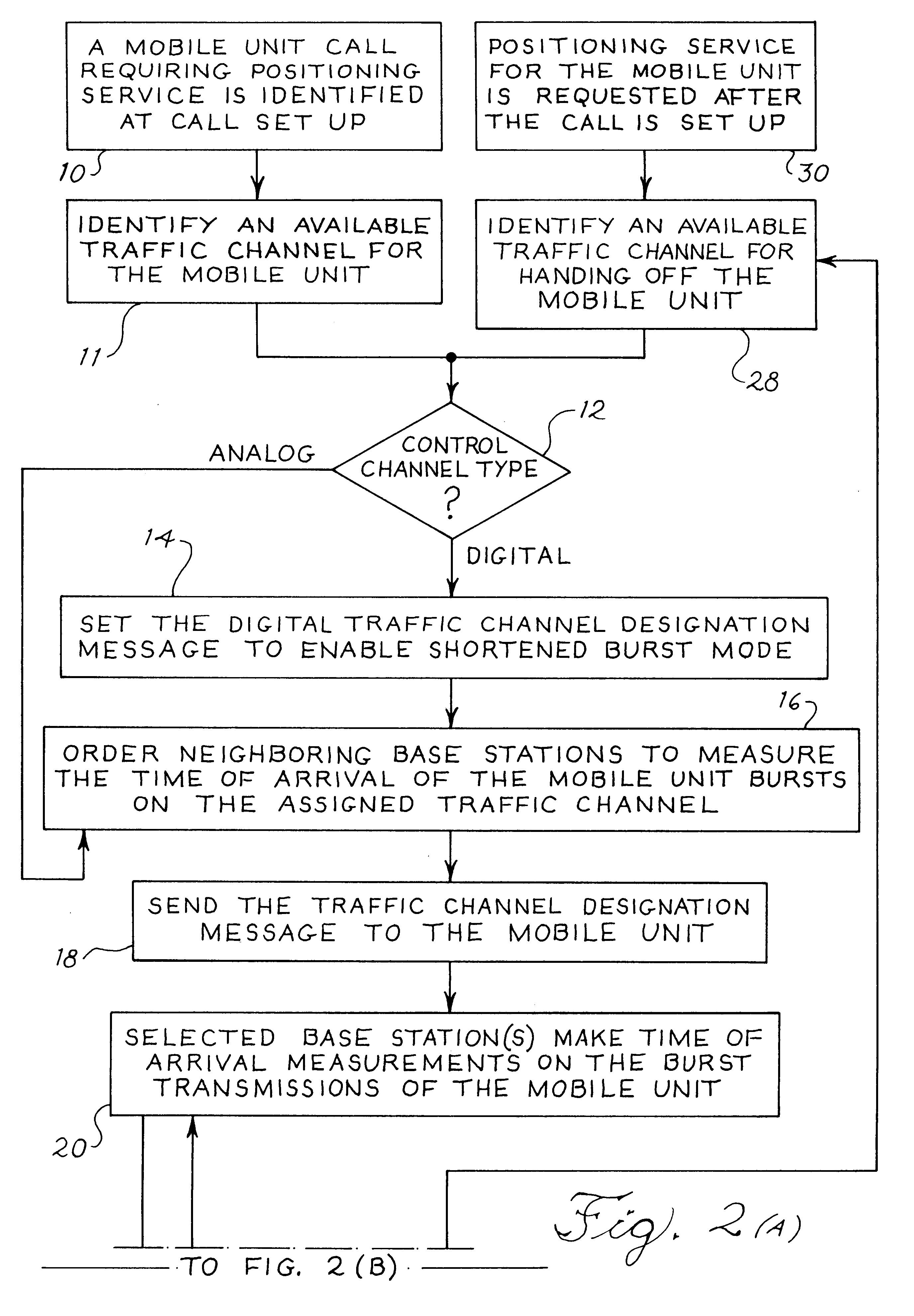Mobile positioning method for a portable communications device using shortened repetitive bursts
a mobile positioning and portable communication technology, applied in the field of mobile communications devices, can solve the problems of inability to determine a position with accuracy over a substantial time, system not employed to detect,
- Summary
- Abstract
- Description
- Claims
- Application Information
AI Technical Summary
Benefits of technology
Problems solved by technology
Method used
Image
Examples
Embodiment Construction
The present invention provides a technique for determining the geographic position of a mobile terminal or unit in a IS-54 or 136 cellular telephone system, in either analog control channel (IS-54) or digital control channel (IS-1 36) modes, using existing mobile units and using known signaling protocols. A known signaling protocol uses shortened bursts with sequences of up to about 5.58 milliseconds each, which repeat every 20 milliseconds. These bursts are used to synchronize or align the timing (i.e., the time slot) of a mobile unit or terminal to that of the base station with which it is communicating.
In an IS-54 system, the control channel is analog and shortened bursts are always transmitted upon initiation of a call. In an IS-136 system, shortened bursts are triggered by setting an appropriate field in the downlink traffic channel designation or assignment message from a base station. Normally, the mobile unit will begin transmitting shortened bursts as soon as it is given a ...
PUM
 Login to View More
Login to View More Abstract
Description
Claims
Application Information
 Login to View More
Login to View More - R&D
- Intellectual Property
- Life Sciences
- Materials
- Tech Scout
- Unparalleled Data Quality
- Higher Quality Content
- 60% Fewer Hallucinations
Browse by: Latest US Patents, China's latest patents, Technical Efficacy Thesaurus, Application Domain, Technology Topic, Popular Technical Reports.
© 2025 PatSnap. All rights reserved.Legal|Privacy policy|Modern Slavery Act Transparency Statement|Sitemap|About US| Contact US: help@patsnap.com



